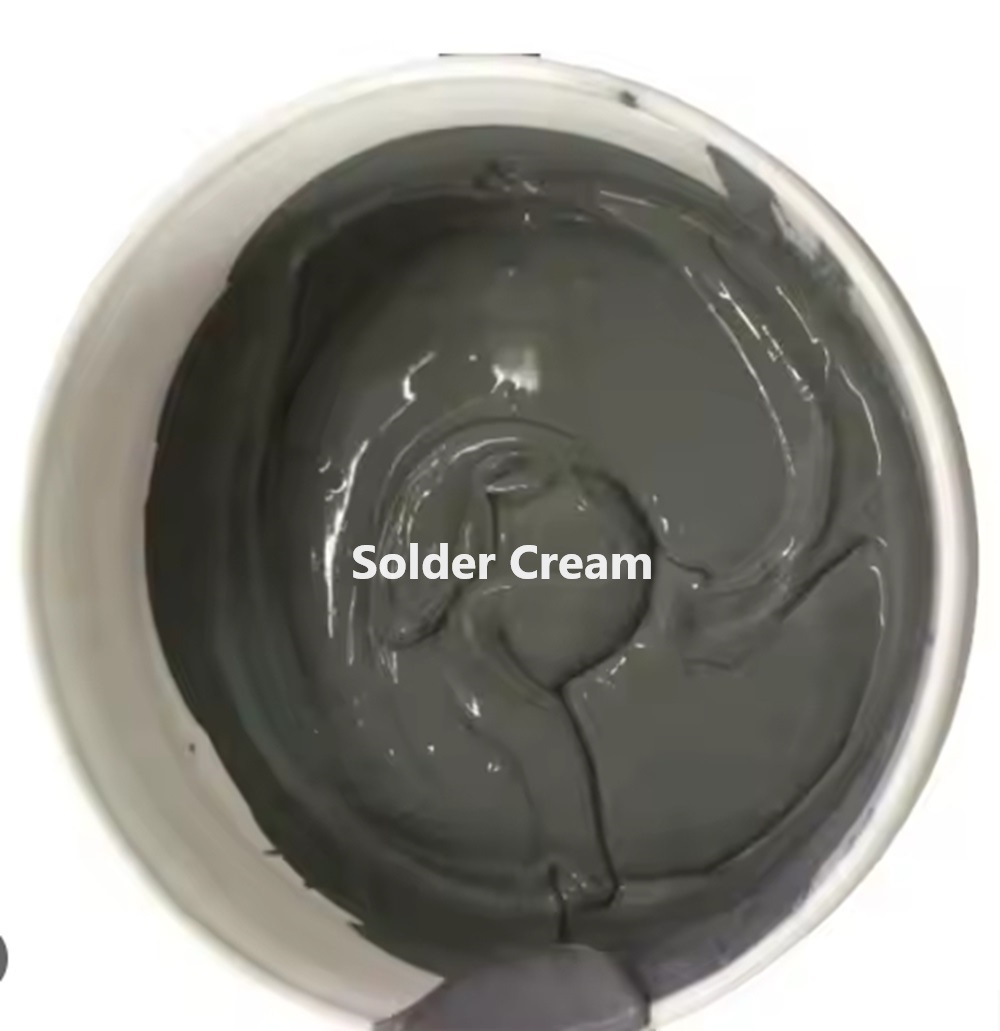When we talk about electronic products, images of sleek smartphones, computers, and other devices often come to mind. However, hidden within these seemingly ordinary devices is a magical material—solder cream.As a key material for connecting electronic components, solder cream plays a pivotal role in the electronics manufacturing industry.Solder cream is a paste-like substance with a certain viscosity and excellent thixotropic properties. It is a homogeneous, stable mixture composed of solder alloy powder (typically spherical particles sized between 30–50 μm), paste flux, and certain additives. At room temperature, solder cream can initially adhere electronic components to their designated positions. When heated to a specific temperature, the solvent and some additives evaporate, and the alloy powder melts. This process creates a bond between the components and the pads. Upon cooling, it forms a permanent solder joint.

Solder Cream
Solder cream is a mixture of metallic alloy powder (about 90% by weight) and chemical components (about 10% by weight), with the chemical portion often referred to as the "flux."
Solder: Primarily composed of tin powder, with other metals like silver and copper added as needed.
Rosin: Acts as a flux to remove oxides, lower the melting point, and improve wetting properties.
Grease: Improves the storage stability, printing performance, and adhesion of the solder cream.
Additives: Adjust properties like viscosity, thixotropy, and drying time.
In electronic soldering, flux must possess the following characteristics:
Oxide removal: It eliminates passivation layers, making the metal surface wettable by solder alloys.
Surface protection: It forms a protective layer (typically rosin) on cleaned surfaces to act as an air barrier before molten solder is applied.
Wettability enhancement: Encourages wetting of the surfaces to be soldered by controlling the surface tension of the solder alloy.
Rheology support: Ensures proper rheological properties of solder cream for smooth printing, effective adhesion of components, and other functionalities.
While the primary role of flux is oxide removal, excellent soldering results can only be achieved if the flux also performs these other functions satisfactorily, which is crucial for PCB manufacturers.
To summarize, solder cream is a key electronic assembly material that achieves a solid connection between electronic components and circuit boards through its own unique properties. With the advancement of science and technology, the requirements for solder cream are also improving, prompting relevant researchers to continuously explore new formulas and technologies to promote the continuous development and innovation of electronic products. And we ordinary consumers, through understanding the knowledge of solder cream, can better appreciate the electronic products around us, marveling at the progress of science and technology and the convenience it brings to our lives.